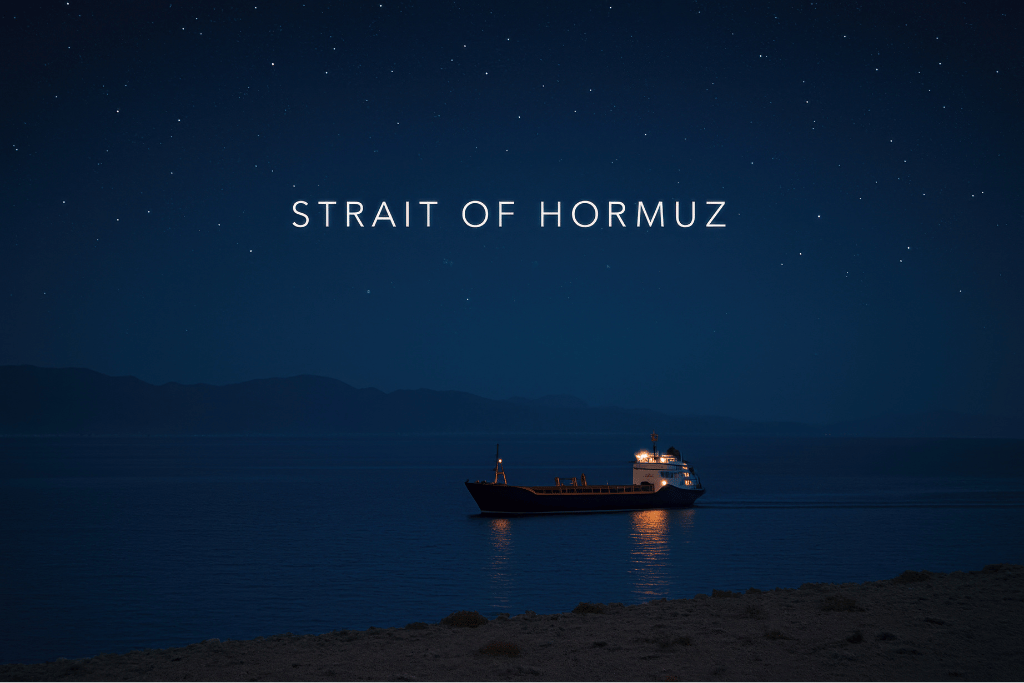As Israel strikes Iran and Tehran threatens to close the Strait of Hormuz, the global oil trade braces for disruption to critical supply routes
Oil prices are lurching after Israel confirmed a strike on Iranian territory on 13 June, described by officials as a “pre-emptive strike” linked to Iran’s nuclear activities.
Brent crude leaped over 10%, hitting US$73.12 a barrel, the highest since January, while US crude on the NYMEX exchange matches it at US$73.20. These price swings are accompanied by a growing fear around supply chains, particularly if the conflict expands.
Now, the Iranian parliament’s decision to vote for the closure of the Strait of Hormuz marks a turning point. This 50km-wide shipping corridor, sitting between Iran to the north and Oman and the United Arab Emirates to the south, is the busiest oil transit chokepoint in the world. Around 20% of global oil passes through this narrow lane daily.
The closure, if implemented, could halt US$1bn worth of oil shipments every day, choking off supply and hitting economies reliant on Middle Eastern crude.
More than just a regional issue, the potential blockage of the Strait of Hormuz poses a serious challenge to global energy flows and supply chains.
In the first half of 2023, about 20 million barrels of oil per day flowed through this route, according to the US Energy Information Administration (EIA), representing US$600bn annually. This crude doesn’t just come from Iran – it also moves from Iraq, Kuwait, Saudi Arabia, Qatar and the UAE to buyers across Asia, Europe and beyond.
“The outlook for Iranian exports is a concern,” says Derren Nathan from Hargreaves Lansdown, “but also the potential for disruption to shipping in the Persian Gulf’s Strait of Hormuz. It’s a key route for about 20% of global oil flows and an even higher proportion of liquefied natural gas haulage.”
Any interruption would squeeze an already tense global supply chain. With tankers carrying both oil and liquefied natural gas threading through this narrow channel – about 33km at its tightest point – the logistical knock-on effects would be felt quickly.
From China and India to Japan and South Korea, importers would face higher costs. In 2022, more than 80% of oil and condensate leaving the strait went to Asia. China alone takes up around 90% of Iran’s oil exports. For countries like India, half of its crude and 60% of its natural gas imports sail through Hormuz. South Korea and Japan rely on it for 60% and 75% of their crude respectively.
Should Iran attempt to close it, experts suggest mines laid by fast-attack boats or submarines could make the strait impassable. While Iran’s navy could threaten commercial or military ships, retaliation by US forces would be likely.
The US, which escorted Kuwaiti tankers during the Iran-Iraq conflict in the 1980s, retains military options, with Secretary of State Marco Rubio stating: “It would hurt other countries’ economies a lot worse than ours.”
Trade routes shift
Efforts to find alternative paths are well underway but can’t match Hormuz’s scale.
Saudi Arabia operates its 1,200km East–West pipeline that runs to the Red Sea, shifting up to five million barrels a day. The UAE channels oil from inland fields to Fujairah on the Gulf of Oman, capable of handling 1.5 million barrels per day. Iran’s Goreh–Jask pipeline, launched in 2021, carries 350,000 barrels, but exports have stalled since September 2024.
Those routes aren’t without risk, as Saleem Khan, Chief Data & Analytics Officer at Pole Star Global explains: “This morning, at 00:15 GMT, we saw the collision of two oil tankers in the UAE’s Persian Gulf.
“The collision between the Adalynn and Front Eagle does not seem to be “security related” according to maritime security monitor, Ambrey. However an analysis by Pole Star seems to hint toward a potential AIS jamming scenario. The Combined Maritime Force’s JMIC information centre said in an advisory this week that it had received reports of electronic interference originating from the vicinity of Iran’s Port of Bandar Abbas.”
Even without disruption, collectively these routes can only manage about 3.5 million barrels a day – less than a fifth of what flows through the Strait of Hormuz.
The EIA notes that in 2024 the strait handled over one-quarter of global seaborne oil trade and one-fifth of all petroleum consumption. Meanwhile, disruptions elsewhere, such as at the Bab al-Mandeb Strait, have already prompted countries like Saudi Arabia to divert shipments through inland pipelines.
While the US now imports just 7% of its crude via Hormuz thanks to rising domestic and Canadian supply, the strait remains vital to the rest of the world.
As energy analyst Vandana Hari explains, Iran has “little to gain and too much to lose” from closing the strait. Such a move would not only isolate it from neighbours but also risk damaging ties with China.
By: Libby Hargreaves / June 23, 2025

